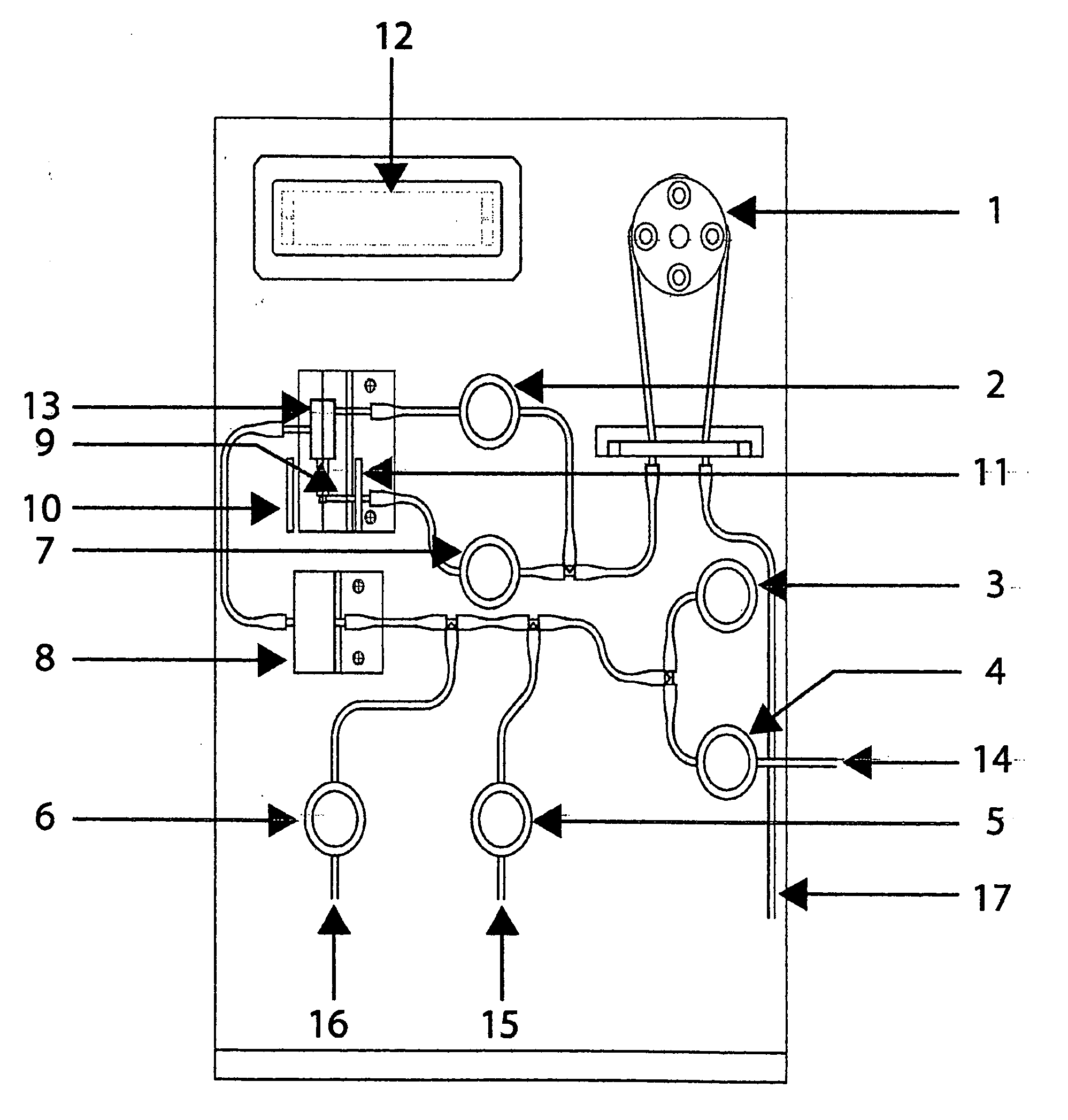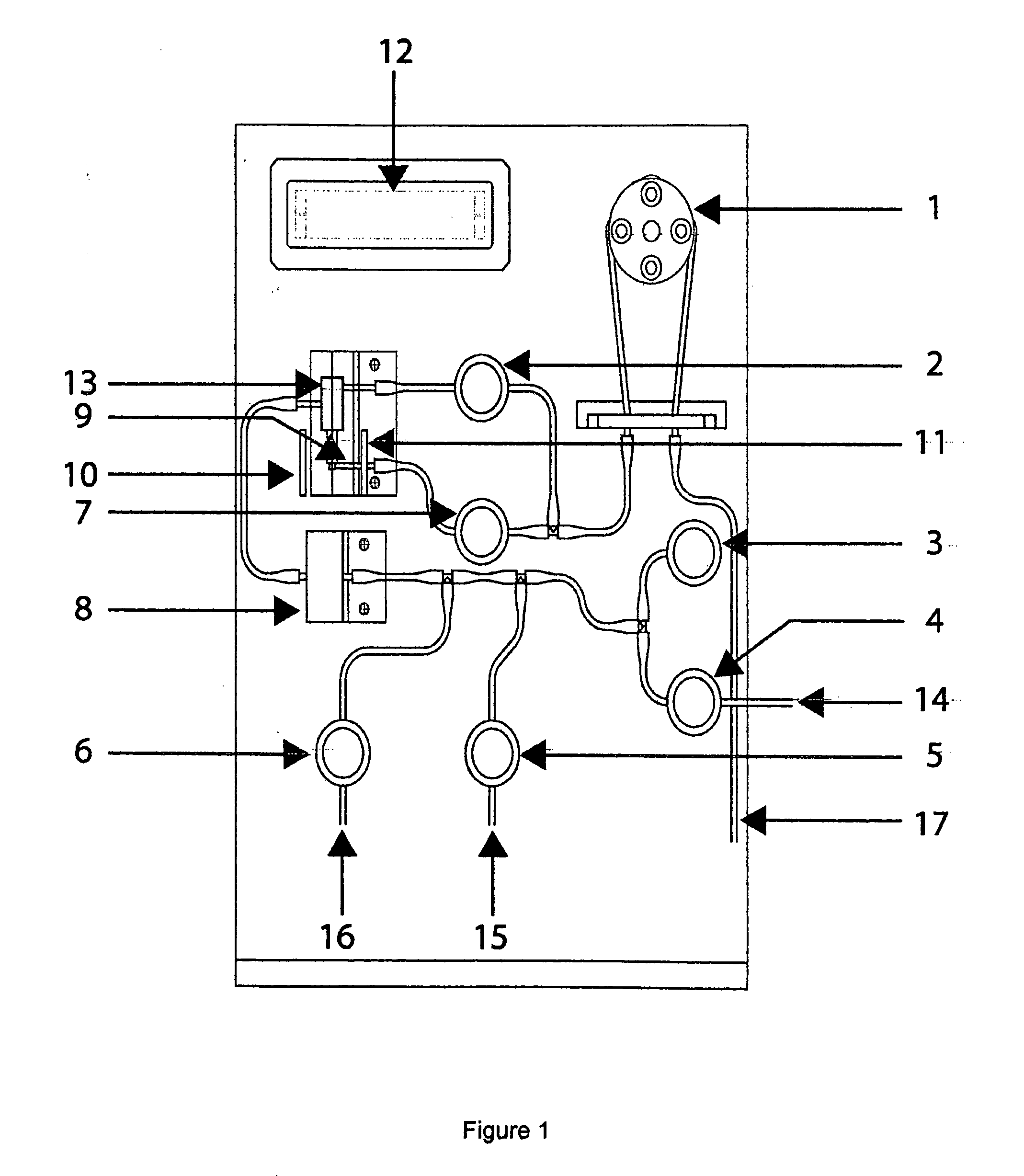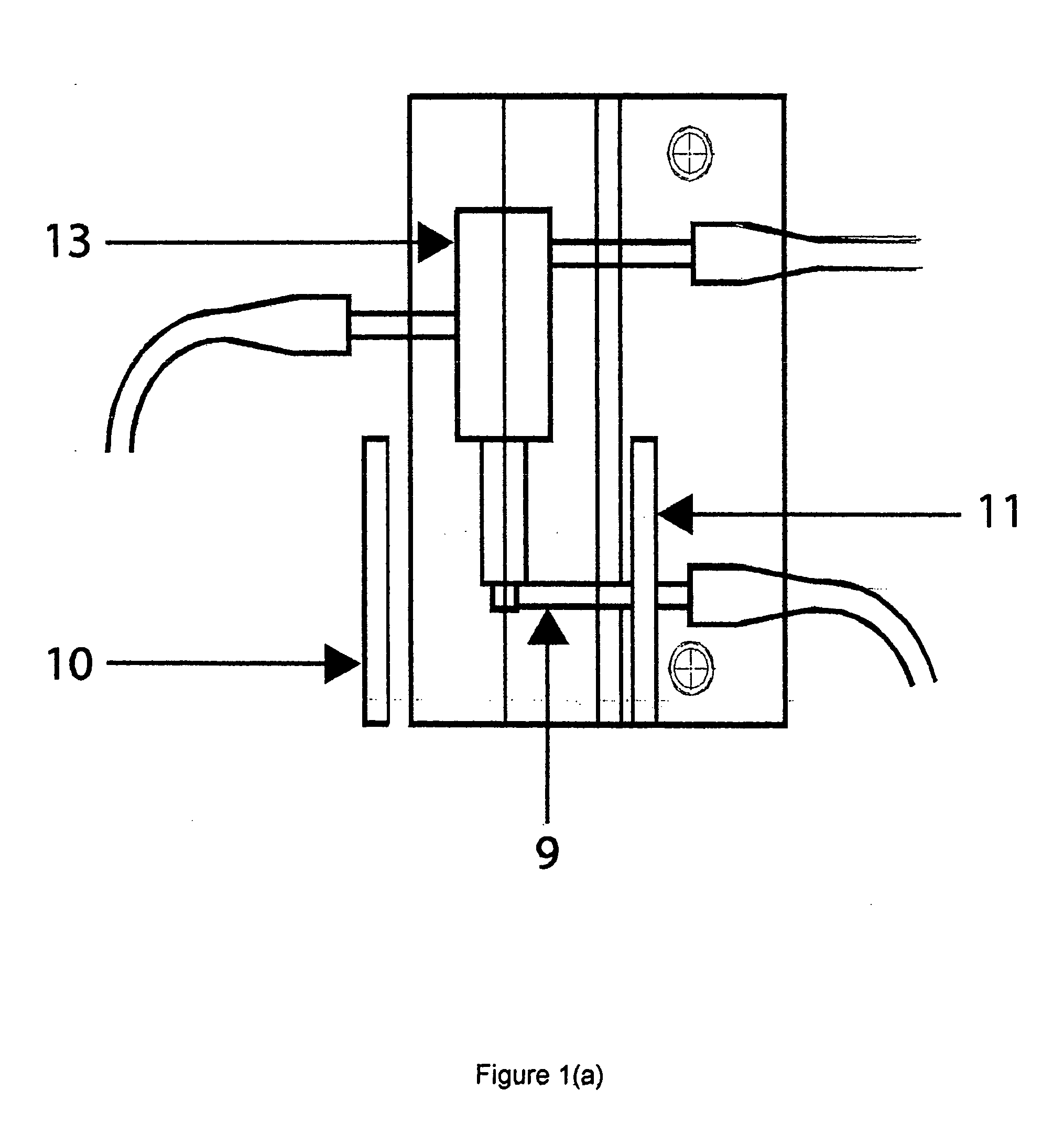Colorimetric determination of somatic cell count in milk
a somatic cell and colorimetric technology, applied in the field of colorimetric determination of somatic cell count in milk, can solve the problems of reducing milk quality, affecting the quality of milk, and affecting the economic benefits of dairy industry,
- Summary
- Abstract
- Description
- Claims
- Application Information
AI Technical Summary
Benefits of technology
Problems solved by technology
Method used
Image
Examples
example 1
Liquid Reagent for SCC Determination
[0021]The reagent component of the invention consists of the following formulation:
3-(N-tosyl-L-alanyloxy)-indole 10 mg / mL
[0022]
Tris buffer 1 molar, pH 9.8 at 24° CelsiusIsopropanol200 mg / mLTriton X-100 15 mg / mL
Ten fresh milk samples were collected for this study. One hundred microliters of the reagent is mixed with 100 μL of fresh milk sample, and the color changes measured by a Minolta CR-321 colorimeter in Hunter's units in 180 seconds were plotted against the Deleval's Direct cell counter (DCC) method. The data is summarized in Table 1, and the correlation shown in FIG. 2.
TABLE 1Correlation of the Present In-Line method versus DCCMinolta ColorSampleSCC by DCCChange17,00010.82214,00012.573382,00014.224530,00016.351,417,00023.36385,00015.057790,00016.8582,445,00029.45959300018.3110295,00011.03
example 2
In-Line SCC Determination (Transmittance Mode)
[0023]The milk sample from a milking line is introduced to the in-line instrument module by a pump and a series of valves, where it is mixed with the reagent. After a fixed incubation period, the mixture is moved to an optical flow cell, where the color intensity is read. The schematic of the in-line instrument is shown in FIG. 1.[0024]1. Fluidic controls—The instrument design has one peristaltic pump 1 and six valves 2 through 7 controlling sample and reagents measurements, mixing, and washing steps required in the assay protocol. The peristaltic pump was selected over direct drive pump because of the proven reliability and low cost. The number of valves can be reduced to three, but using six valves simplifies the design of the sequencing for the initial prototype. Similarly, the number of pumps used can be increased to three or more, and other fluidic controls such as positive displacement syringes can be added to increase the accuracy...
example 3
In-Line SCC Determination (Reflectance Mode)
[0035]The optical detection module of the in-line SCC instrument was modified using the same flow cell and fluidic controls but the optical detector was changed. The optical signal change was measured by a reflectance mode rather by the transmittance mode. As shown in FIG. 3, the emitter 30 and the sensor were placed on the same side of the optical flow cell. The light source was directed to the flow cell surface by a fiber optics 32, and the reflectance measurement was guided back to the sensor using the same optical fiber bundle. The angle of reflectance measurement was 180 degree in this example, but could be optimized by setting the optical fiber at another angle. The light intensity reflected from the surface of the milk and reagent mixture inside the flow cell 31 was measured. Data were collected for 30,60,90,120, and 180 seconds assay times. A standard curve was constructed using the reflectance mode using the 180 seconds assay time...
PUM
| Property | Measurement | Unit |
|---|---|---|
| wavelength | aaaaa | aaaaa |
| path length | aaaaa | aaaaa |
| angle | aaaaa | aaaaa |
Abstract
Description
Claims
Application Information
 Login to View More
Login to View More - R&D
- Intellectual Property
- Life Sciences
- Materials
- Tech Scout
- Unparalleled Data Quality
- Higher Quality Content
- 60% Fewer Hallucinations
Browse by: Latest US Patents, China's latest patents, Technical Efficacy Thesaurus, Application Domain, Technology Topic, Popular Technical Reports.
© 2025 PatSnap. All rights reserved.Legal|Privacy policy|Modern Slavery Act Transparency Statement|Sitemap|About US| Contact US: help@patsnap.com



